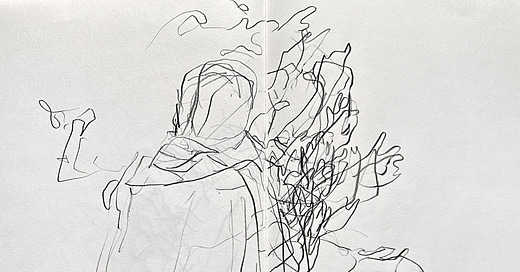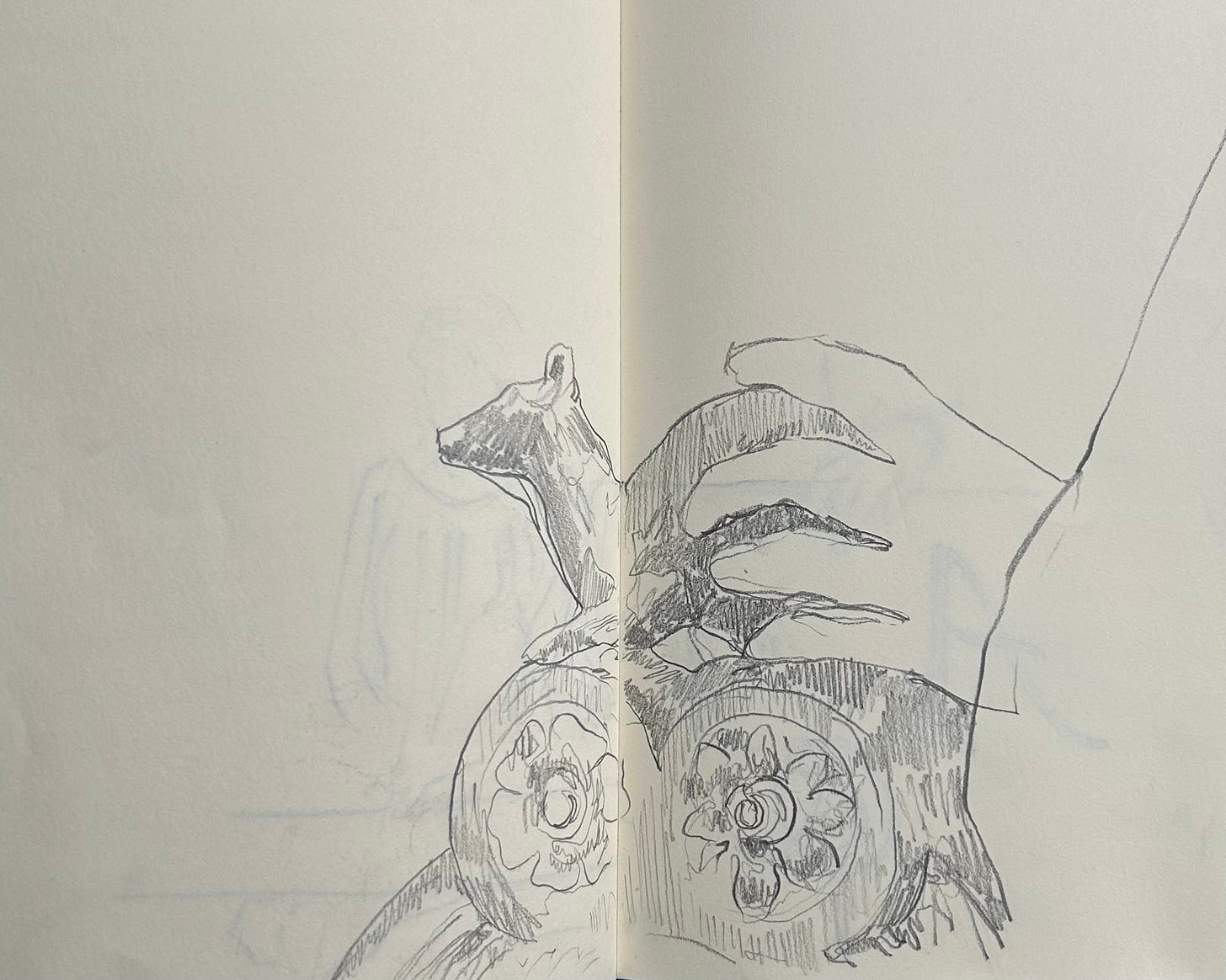Now that we’re a few weeks into term, there have been more conversations happening in the studios about what the work we make is about, and I’ve been finding it difficult to articulate my current ideas. I’ve come to realise that the idea of articulation itself is actually integral to the work I’m experimenting with. Exploring ideas about transition, experience and intuition, I am attempting to hold these lightly enough, that I let space for definitions and connections to occur. If I already knew how to precisely and eloquently link and verbalise the thoughts in my head, and experiences in my body, I would; but the reality is I have to trust my instinct to allow words, images and objects their own space to emerge and form meaning. I do not want to rush in and find meaning, for the sake of other.
I’ve been collecting and gathering language and sorting back through what I’ve stored to find what really resonates with me. These fragments of phrase, strings of words, are starting points for making. I thought I would find the basis for my exploration through their content, but I now see them collectively, as a whole. They exist as evidence of moments when, on a fundamental and non-rational level, I’ve connected with something; when something has felt like a “truth which I already in some mysterious way know.”
“This process of selection, over which I have virtually no control, isolates those aspects of my experience that are most essential to me in my work because they echo my own attunement to what life presents me. It is as if there are external equivalents for truths which I already in some mysterious way know.”
Anne Truitt, Daybook: The Journal of an Artist
We act as filters and vessels. We’re constantly taking in, and most of that passes through us and leaves again. What is it that stays? What does that say?
“I’m peering into the heart of these words”
Let what comes out after that be a translation for something intangible.
Aside from verbal communication, I’ve noticed an attraction to hands. I’ve been attending college chapel services and drawing in my sketchbook, and I keep coming back to them: hands holding scores, hands resting, hands conducting. In the studios, I’ve been using animation to play with collected phrases, and have been using hands in the spaces between fragments. They have this ability to hold this thing which I can’t communicate. They provide a home for the intangible, for the vulnerable and the fragile.
This week I had the opportunity to attend a ‘Creative Lab’ session for music students, during which Jonathan Henning Leidecker demonstrated some exploratory work with a collection of recorded samples of words. He spoke about their melody, about how taken from their context and played multiple times, they transcend their fundamental meaning and it becomes about how they exist and interact in space and time. As he played, the words moved vertically upwards on a track on his iPad, moving up into the sky, moving out of his iPad and into the air towards us. He’d pull the words back down with his finger or hold them in place, and then one by one, when he saw the wave forms align as he wanted, he’d release them. He’d let them go up and out into the space.
He talked about why he’d started using an iPad to create these pieces instead of a laptop. I was struck with the visibility of his hand, and the haptic sense to control the sound. I love the idea of hands and gestures grasping onto these words.
I’m beginning to understand that part of what I’m exploring is how I can capture the mutable and often unspeakable nature of experience: providing a home for fragile, vulnerable ideas, and holding on to words to make space for what we can’t say.
Everyone has the right to freedom of expression
We talk about the importance of free speech in this country, but did you know, that in actuality, what we are really talking about is freedom of expression? Article 10 of the Human Rights Act of 1988 protects our right, not to freedom of speech, but to freedom of






